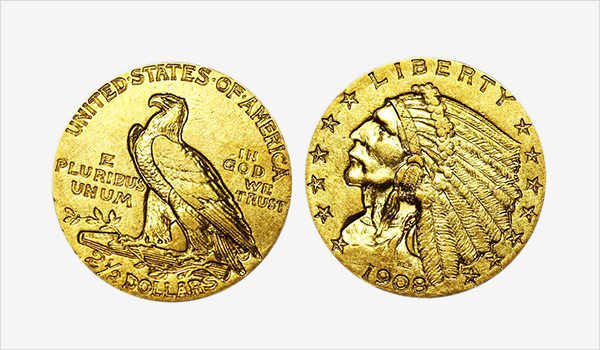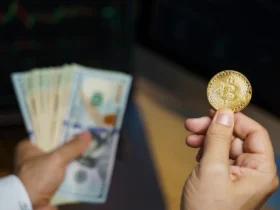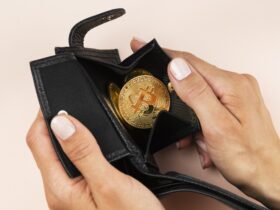Since their release in 1908, the Indian Head quarter and half eagle gold coins have been viewed as some of the most distinctive ever released by the United States mint. Their handsome artwork and recessed design have served to set them apart from many of the other gold pieces that have been minted in the United States.
These coins, aside from being pieces of art in their own rights, are excellent investment assets, particularly for someone who is new to numismatic investing.
Why are Indian head coins good investments?
The primary benefit to the Indian Head quarter and half eagles as investment assets lies in their relative widespread availability and reasonable price. Many gold coins can exceed well over $1000 in price, making serious numismatic investing difficult for someone without large amounts of capital.
However, the Indian Head coins strike just the right balance of being high in value without being too high for the average person to afford. At around $280-300 for a quarter eagle and $450-550 for a half eagle in higher mid-range grades in the current market, these coins are assets that nearly anyone can afford to invest in.
This also makes these coins a more financially versatile asset than some higher priced coins. If a collector or investor has purchased one or two very highly priced coins, the only way to convert those assets back into liquid value is to sell those coins.
While the same is true of any coin, medium-priced coins such as Indian Heads offer the ability to liquidate smaller amounts of value at a time, rather than having to sell off a valuable asset when only part of its value is needed in the form of liquid cash.
Finding Indian head coins
Another advantage to Indian Head quarter and half eagles is that they are relatively abundant. A trip to any coin store, either online or offline, will almost certainly yield at least a few examples of these coins.
This is very important, as it allows investors to readily find and purchase them to act as holders of value. Scarcer coins, while they will have more collector value, can also be difficult to use as solid investment pieces because of the problems involved in obtaining them.
Numismatic and Bullion Values
The quarter and half eagle gold Indian Head coins contain .12094 and .24187 troy ounce of gold. of gold, respectively. Calculated at the current market value of $1,075 per ounce, this equates to a bullion value of $130 and $260, respectively, rounded for the sake of convenience.
This puts the bullion value at just a bit less than half of the price of a higher mid-range grade coin. Given current volatility in the gold market, this balance between collector and bullion value is something that an investor should be looking for in any numismatic investment.
Those who wish to invest in these coins, however, may want to hold off just a while longer. Gold is currently on a downward trend and is expected to decline going into 2016, meaning that prices of gold coins will decrease slightly to match their decreased bullion values.
Conclusion
Indian head quarter and half eagle coins are excellent numismatic investments, especially for the first time investor in valuable coins. Their easy availability, reasonable price range and good bullion to collector value ratio makes them a good introduction to numismatic investing.
From the collector standpoint, they are also some of the most handsome coins ever used in general circulation in the United States, and stand out as works of art all their own.
This article is written by investing.co.uk, one of UKs leading websites for financial news.







Leave a Reply